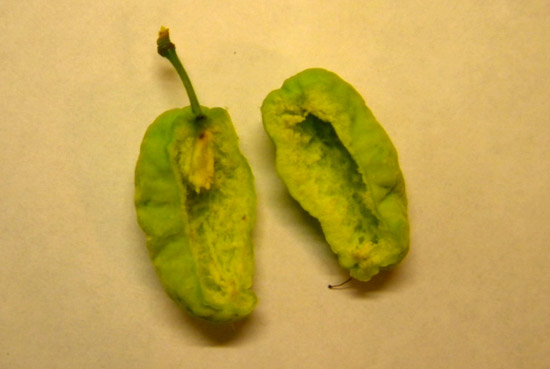Issue 6, June 3, 2013
Taphrina Diseases
Taphrina is a fungal genus within Ascomycetes that infects numerous ornamental and fruit trees. Taphrina pathogens thrive in cool, wet weather, and depending on the plant species, can cause symptoms such as leaf curls, blisters, stem dieback, and fruit deformation. Taphrina spp. will overwinter in a yeast-like stage on the bark, near buds. If weather conditions are ideal in the spring, as they have been this year, these fungal pathogens will quickly infect leaves as the buds break. The infection will progress and eventually cause curling or blister-like symptoms. Some of the commonly seen Taphrina spp. can cause leaf drop, but as the weather warms and dries, the tree should refoliate. This new flush of leaves should be immune to repeat infections. Taphrina spp. can lay dormant for several years until the perfect weather conditions occur to induce a heavy infection. Taphrina is also interesting in the fact that each of its species is host specific. Below are some commonly seen Taphrina diseases in Illinois.

Puckered and distorted leaves characteristic of Peach Leaf Curl caused by Taphrina deformans

Lesions characteristic of Oak Leaf Blister caused by Taphrina caerulescens

Distorted, flattened plums lacking a stone caused by Plum Pockets (Taphrina pruni)
In addition to these three diseases, we have also been observing Taphrina leaf blister of maple, which is fairly, uncommon in Illinois. For more information on Taphrina leaf blister, you can refer to the previous Home, Yard, and Garden Newsletter article.
Controlling Taphrina infection on trees is all about preparation and timing. Choosing dwarf varieties and good pruning practice can be helpful, as it is difficult to provide complete spray protection to large dense trees. Applying fungicide at the proper times, such as just before bud break, can provide some much needed protection from Taphrina diseases. However, once infection takes place, this fungus can no longer be controlled. Some other recommended strategies are applying nitrogen to promote new leaf growth, watering to reduce drought stress, and thinning fruit to reduce demand on remaining leaves. Although these diseases will cause temporary unsightliness and yield loss, the good news is these Taphrina diseases mentioned above are not known to cause tree death. (Stephanie Porter and Nicholas Prudhomme)